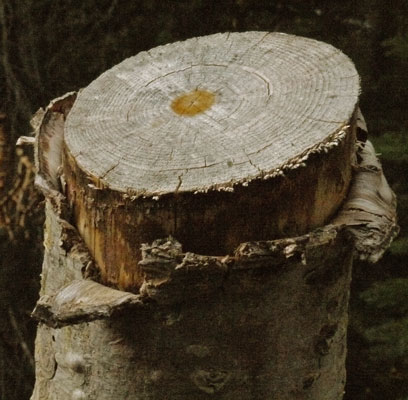
Stump, Peeling Bark

Stump, Peeling Bark |
| After this tree was sawn down, the bark died, dried, and peeled back. The outside ring of wood is splintering outward, perhaps where the saw broke out or where the falling tree teetered. |
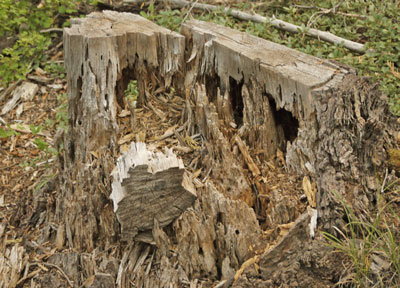
Stump Interior Rotting |
| Stumps rotting much faster inside than outside are fairly common. The bark and top dry in fair weather, inhibiting fungi and insect activity, while the inside stays wet and decomposes. |
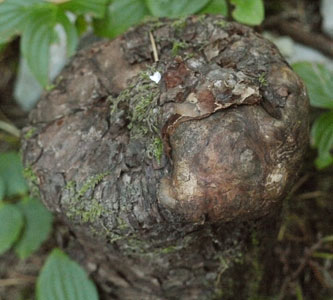
Stump Healed Over |
| Sawing a tree down doesn't always kill it. Bark grew over the cut on this stump. Often, but not always, I will see a living sucker next to a stump recovering like this. I believe photosynthesis in the sucker supplies vital nutrients to the stump, allowing this type of recovery to occur. I'm not sure how stumps well separated from any living tree stay alive, but I've seen some recovery on them too. |
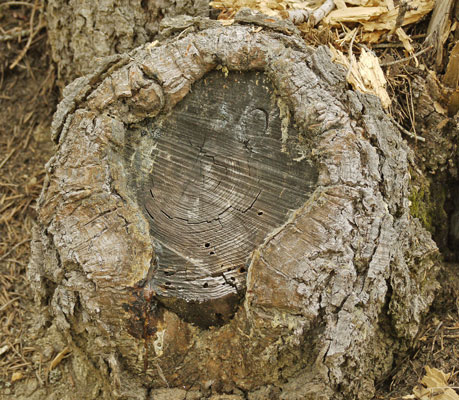
Stump Partially Healed Over |
| A ring of bark healing over the cut is much more typical than the full end covering shown in the previous photo. |
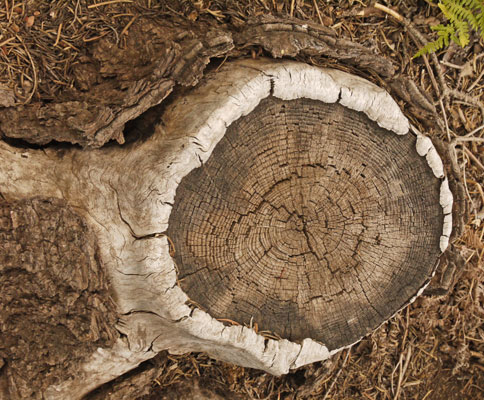
Stump Partially Healed Over |
| Here the tree has died after some annular healing. The bark has flaked off, exposing the scar wood tissue below. |
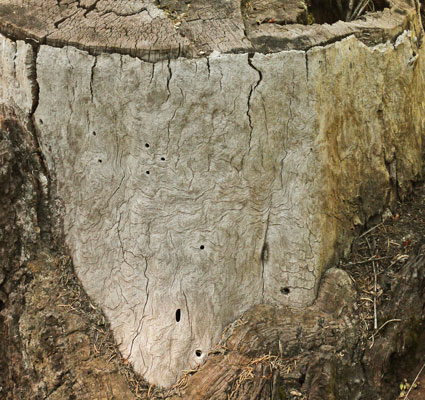
Healing Stump |
| This stump continued to live and try to heal perhaps one or two years. The waviness of the wood grain is fairly typical in healing areas of trees where there is not a continuous path up the tree for the sap to follow. |
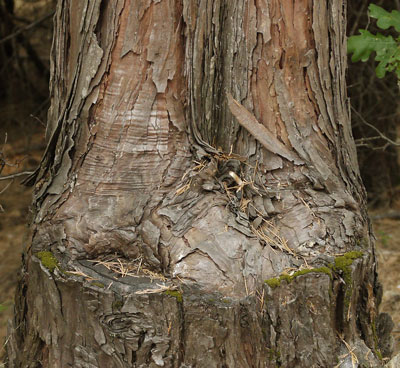
Stump With New Tree |
| Some species of trees can sprout a new twig at the saw cut. A new trunk grows starting at one edge of the stump, and grows off center like this. The bark here has nearly covered the stump cut. |
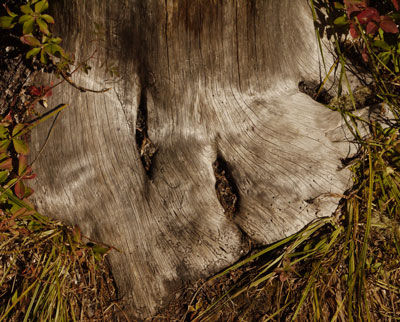
Stump With New Tree |
| This new trunk grew several years before the tree died. The new trunk both received nutrients from all around the stump, and several years of wood growth provided some strong attachment all around the old stump. |
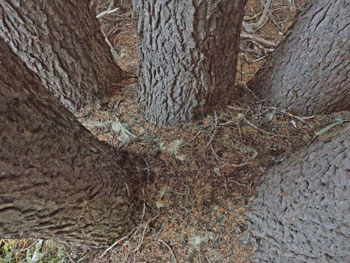
Ring Tree |
| Above and below is a ring tree. Twigs sprouted and grew several places around the stump, each surviving and, rather than healing over the stump like previous examples, derived its strength and nutrients by growning straight downward. The trunks further out from the inside circle are from suckers in the dirt rather than stump sprouts. |
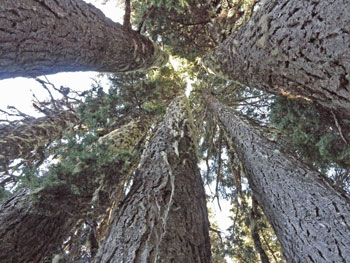
Ring Tree |
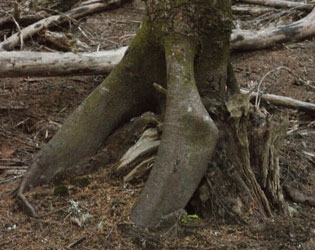
Nursery Stump |
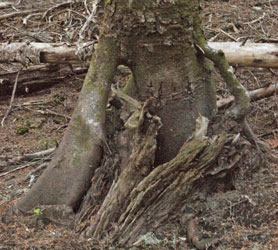
Nursery Stump |
| Two views of a nursery stump. A new seedling sprouted on the dead, rotten stump. The stump provided water stored like a sponge, and some nutrients. Roots grew down the sides of the stump, eventually thickening to the network of living roots shown. Once the roots are strong enough to support the new tree, the nursery stump may rot or burn away without hurting the new tree. | |